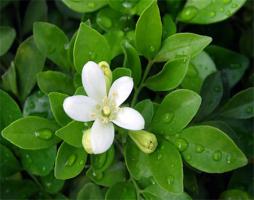Introduction
Fall is the perfect time to plant trees as the cooler temperatures and increased rainfall create ideal conditions for root growth. However, many homeowners may be unsure about how much water newly planted trees in the fall require. In this article, we will discuss the factors that affect watering requirements and provide tips for ensuring your trees receive the proper amount of hydration.
Why Is Watering Trees Important?
Water is essential for tree growth and survival, especially during the first few years after planting. Newly planted trees have shallower roots and require more frequent watering than established trees. Adequate water also helps trees better withstand environmental stressors like drought, extreme temperatures, and pests.
Factors That Affect Watering Needs
Several factors can affect how much water newly planted trees need, including the tree's age, species, soil type, and climate. Young trees require more water than older trees, while certain species, such as birch and willow, have higher water requirements. Trees planted in sandy or rocky soil will need more frequent watering than those in clay or loam soil, which have a greater water-holding capacity. Finally, dry and windy climates will increase the water requirements of your newly planted trees.
Tips for Watering Newly Planted Trees in the Fall
1.
Adjust your watering schedule based on rainfall. Trees should receive about an inch of water each week, either from rainfall or manual watering. Monitor the weather forecast and only water if there has been a shortage of rain or if the soil feels dry to the touch.
2.
Apply water slowly and evenly to the root zone. Use a soaker hose, drip irrigation system, or watering can to apply water directly to the base of the tree, avoiding the trunk and foliage. This allows the water to be absorbed by the roots where it is needed most.
3.
Avoid overwatering, as this can lead to root rot and other problems. To prevent excess water from pooling around the tree, water in the morning or early evening when temperatures are cooler, and the water can penetrate the soil better.
4.
Use mulch to retain moisture and regulate soil temperature. Apply a layer of organic mulch, such as wood chips or bark, around the base of the tree, keeping it at least a few inches away from the trunk. Mulch helps retain moisture in the soil, regulate soil temperature, and suppress weeds that compete with your newly planted trees for water.
5.
Monitor your trees regularly for signs of stress or dehydration. Look for wilted or yellowing leaves, stunted growth, and leaf drop, which may indicate a lack of water. Adjust your watering schedule as needed to keep your trees healthy and thriving.
Conclusion
Watering newly planted trees in the fall is critical to their survival and long-term health. By understanding the factors that affect watering requirements and following these tips, you can ensure your trees receive the proper amount of hydration and thrive in your landscape for many years to come.

 how many times do yo...
how many times do yo... how many planted tre...
how many planted tre... how many pine trees ...
how many pine trees ... how many pecan trees...
how many pecan trees... how many plants comp...
how many plants comp... how many plants can ...
how many plants can ... how many plants and ...
how many plants and ... how many pepper plan...
how many pepper plan...






























